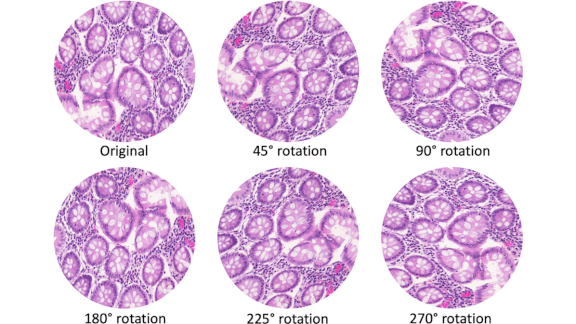A cat rotated by any number of degrees is still a cat. It takes a lot of rotated training images to teach convolutional filters this simple fact. A new filter design has this common-sense knowledge built-in.
What’s new: Simon Graham led a team at the University of Warwick to create the Dense Steerable Filter CNN (DSF-CNN), a convolutional neural network that can see a picture in various rotations and generate consistent output.
Key insight: Pixels are tiny squares. Rotating them by increments other than 90 degrees results in distortion and lost information. Earlier work developed so-called steerable filters that eliminate distortion by subdividing their weights and recombining them to create the desired rotation. DSF-CNN builds on that work by incorporating dense connections that improve performance and data efficiency.
How it works: DSF-CNN operates slightly differently on the input and hidden layers. At the input, it extracts initial features for each of several rotational angles (illustrated by figure b above). In the hidden layers, it extracts more complex features at each angle (figure c).
- The researchers evaluated systems with 4, 8, or 12 filters corresponding to rotations of 90, 45, or 30 degrees respectively. The filters share weights, so the model can look at one image from a number of perspectives.
- At the input, DSF-CNN extracts features from each channel of an image by applying a set of filters rotated through various angles. Each filter’s action multiplies the number of channels.
- In the hidden layers, the system re-examines features from previous layers. To keep memory requirements from ballooning, hidden layers apply one filter per channel rather than the full complement.
- For more efficient training, the authors implemented dense connections by concatenating related features from multiple layers.
Results: The researchers tested the 8-filter model on pathology slides, since medical images come in a variety of orientations. DSF-CNN achieved 0.975 area under the curve (AUC), a measurement of true positives and false positives where 1 is perfect. That score beat a state-of-the-art CNN (0.949 AUC) and rotational G-CNN (0.968). DSF-CNN also turned in superior performance on two other medical image datasets.
Why it matters: Rotational symmetry gives neural networks fits. DSF-CNN doesn’t cover every angle, but it vastly reduces the data requirements and simplifies training them to recognize that rotated images are equivalent.
We’re thinking: Rotational symmetry can cause trouble for humans, too. Check out the Thatcher Effect.

